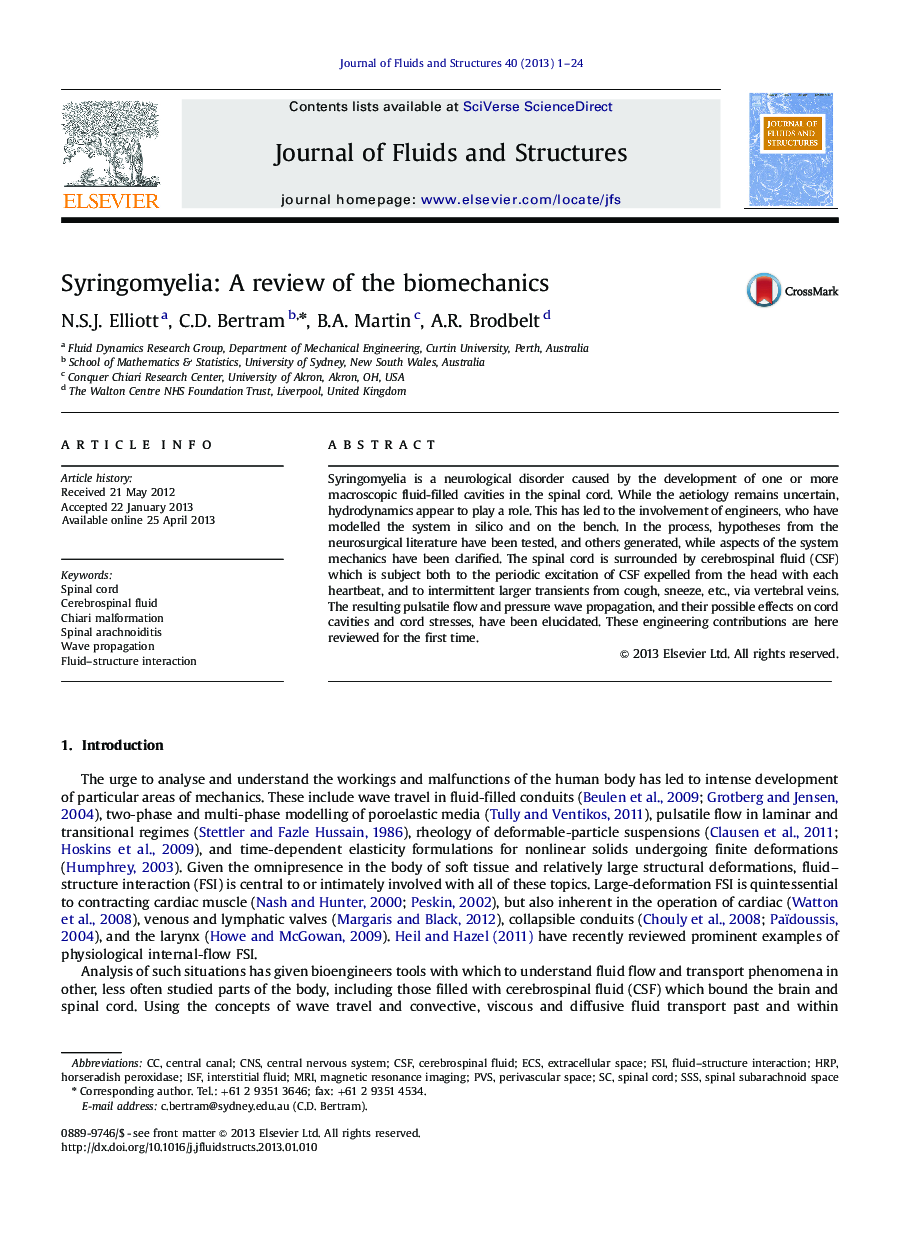| Article ID | Journal | Published Year | Pages | File Type |
|---|---|---|---|---|
| 797002 | Journal of Fluids and Structures | 2013 | 24 Pages |
•Hydrodynamics is thought to play a major role in the development of syrinxes.•Engineers analyse the spinal cord system by building models in silico and physically.•Feasible aspects of the system mechanics are clarified and quantitatively tested.•Hypotheses by neurosurgeons about syrinx genesis are tested and others proposed.•Progress so far and still-open questions in syringomyelia pathogenesis are reviewed.
Syringomyelia is a neurological disorder caused by the development of one or more macroscopic fluid-filled cavities in the spinal cord. While the aetiology remains uncertain, hydrodynamics appear to play a role. This has led to the involvement of engineers, who have modelled the system in silico and on the bench. In the process, hypotheses from the neurosurgical literature have been tested, and others generated, while aspects of the system mechanics have been clarified. The spinal cord is surrounded by cerebrospinal fluid (CSF) which is subject both to the periodic excitation of CSF expelled from the head with each heartbeat, and to intermittent larger transients from cough, sneeze, etc., via vertebral veins. The resulting pulsatile flow and pressure wave propagation, and their possible effects on cord cavities and cord stresses, have been elucidated. These engineering contributions are here reviewed for the first time.
